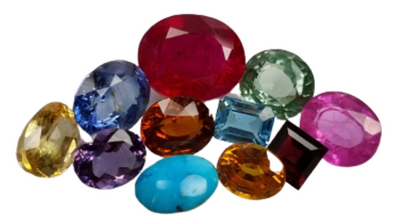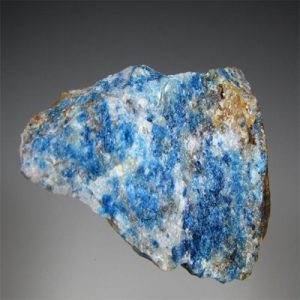Scorzalite: Gemstones Information
Scorzalite is a captivating mineral known for its rich blue color and unique crystal formations. As a rare phosphate mineral, scorzalite exhibits remarkable properties that make it prized by collectors and enthusiasts. Let’s explore in detail the properties, occurrences, uses, and significance of scorzalite.
Properties:
Scorzalite is a magnesium iron aluminum phosphate mineral with the chemical formula (Mg,Fe^2+)_Al_2(PO_4)_2(OH)_2. It crystallizes in the monoclinic crystal system, forming prismatic crystals with a distinctive blue coloration. The mineral can also occur in granular or massive forms. Scorzalite typically has a vitreous to resinous luster and a hardness of 5 to 6 on the Mohs scale, indicating moderate durability.
Occurrences:
Scorzalite is primarily found in metamorphic rocks, particularly in high-grade metamorphic environments such as schists and gneisses. It often occurs alongside other phosphate minerals such as lazulite, wardite, and apatite. Major deposits of scorzalite have been discovered in regions including Brazil, Madagascar, the United States, and Myanmar. The mineral’s striking blue color and rarity contribute to its desirability among collectors.
Uses:
Gemstone: Scorzalite’s intense blue color and attractive crystal formations make it a sought-after gemstone. It is often faceted or polished into cabochons for use in jewelry, including rings, earrings, pendants, and bracelets. Fine-quality scorzalite gemstones with vivid color and clarity are highly valued in the gem market.
Mineral Specimens: Scorzalite specimens are prized by mineral collectors for their aesthetic appeal and rarity. Specimens displaying well-formed crystals or attractive color zoning are particularly sought after for display in mineral collections and museums.
Significance:
Scorzalite holds significance both scientifically and aesthetically. Its occurrence in metamorphic rocks provides insights into the geological processes involved in high-grade metamorphism and the formation of phosphate minerals. Additionally, scorzalite’s vibrant blue color and gemstone quality make it a valuable addition to the world of gemstones and mineral specimens. Its rarity and unique properties contribute to its allure and desirability among collectors and enthusiasts.
Conclusion:
In conclusion, scorzalite is a captivating mineral prized for its intense blue color and aesthetic appeal. Whether admired for its gemstone quality or appreciated for its rarity in mineral collections, scorzalite continues to captivate individuals with its beauty and significance. As appreciation for rare and unique gemstones grows, scorzalite remains a noteworthy addition to the world of minerals and gemstones, enriching both scientific knowledge and aesthetic appreciation.





